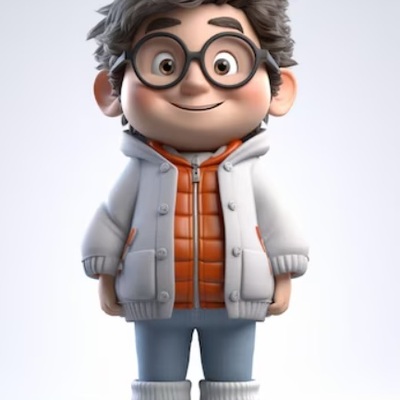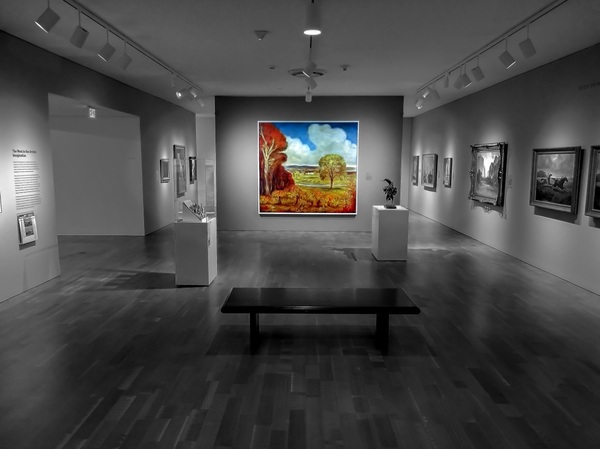Notifications
ALL BUSINESS
COMIDA
DIRECTORIES
ENTERTAINMENT
FINER THINGS
HEALTH
MARKETPLACE
MEMBER's ONLY
MONEY MATTER$
MOTIVATIONAL
NEWS & WEATHER
TECHNOLOGIA
TV NETWORKS
VIDEOS
VOTE USA 2026/2028
INVESTOR RELATIONS
COMING 2026 / 2027
ALL BUSINESS
COMIDA
DIRECTORIES
ENTERTAINMENT
FINER THINGS
HEALTH
MARKETPLACE
MEMBER's ONLY
MONEY MATTER$
MOTIVATIONAL
NEWS & WEATHER
TECHNOLOGIA
TV NETWORKS
VIDEOS
VOTE USA 2026/2028
INVESTOR RELATIONS
COMING 2026 / 2027
About Me
 Joquim Dias
Joquim Dias He's into music and art, and yup; your dog would probably like him more than he likes you. Need to know a fact about a song or maybe which art looks best? He's your Pal.
 Joquim Dias -
August 2, 2024 -
Arts & Culture -
lifestyle
Art
Paintings
-
0.9K views -
0 Comments -
0 Likes -
0 Reviews
Joquim Dias -
August 2, 2024 -
Arts & Culture -
lifestyle
Art
Paintings
-
0.9K views -
0 Comments -
0 Likes -
0 Reviews

Contemporary art, with its vibrant expressions and boundary-pushing innovations, captures the imagination of collectors, critics, and enthusiasts worldwide. However, a common question that arises is: Why is original contemporary art more expensive than mass-produced art? This article delves into the multifaceted reasons behind the higher costs of original contemporary artworks, exploring key trends and future projections to provide a comprehensive understanding.
Original contemporary art embodies the unique vision of the artist. Each piece is a one-of-a-kind creation that reflects the artist’s personal experiences, thoughts, and emotions. This uniqueness is a significant factor in its valuation.
Original artworks often provoke deeper emotional and intellectual responses compared to mass-produced art. The personal touch of the artist and the narrative behind each piece add layers of meaning, making the artwork more engaging and valuable to collectors.
Creating original contemporary art is a labor-intensive process. Artists invest considerable time, effort, and skill into each piece, ensuring a level of detail and quality that is unmatched by mass-produced art.
Artists often use high-quality materials and employ intricate techniques to create their works. The use of premium canvases, paints, and other materials, combined with specialized techniques, contributes to the higher cost of original art.
Original contemporary art is inherently limited in supply. Unlike mass-produced art, where prints and reproductions are available in large quantities, original artworks are singular creations. This scarcity drives up their value in the market.
The demand for original contemporary art is driven by collectors and investors who perceive these pieces as valuable assets. The historical appreciation of art values further fuels this demand, creating a competitive market where prices can soar.
The reputation of the artist plays a crucial role in the valuation of original contemporary art. Established artists with a strong track record and recognition in the art community command higher prices for their works.
The history of ownership and exhibition of an artwork, known as provenance, can significantly impact its value. Artworks with a well-documented provenance, including exhibitions in prestigious galleries and museums, tend to be more expensive.
Contemporary art often addresses current social, political, and cultural issues. Artworks that resonate with the zeitgeist of the time are seen as culturally and historically significant, enhancing their value.
Original contemporary art contributes to the evolution of art history. Pieces that push the boundaries of artistic expression and innovation are highly valued for their impact on the art world.
The demand for original contemporary art is expected to grow as more collectors and investors recognize its value. Emerging markets and a growing global middle class are likely to contribute to this increasing demand.
The rise of digital platforms has made it easier to buy contemporary art online. These platforms provide access to a wider audience, allowing collectors from around the world to discover and purchase original artworks.
As awareness of sustainability and ethical considerations grows, original contemporary art may become more appealing. The environmental impact of mass production and concerns about the exploitation of artists in mass-produced art markets could drive more consumers towards original art.
To provide a more detailed understanding, we will delve into each aspect in greater depth, incorporating relevant examples, statistics, and insights from the art world.
Every artist brings a distinct perspective to their work, shaped by their personal experiences, cultural background, and creative journey. This individuality is at the heart of what makes original contemporary art so valuable. Unlike mass-produced art, which is designed to appeal to broad tastes and is often devoid of a personal touch, original artworks offer a glimpse into the artist’s soul.
For example, consider the works of Anish Kapoor, whose unique use of space and material creates immersive experiences that cannot be replicated. Each piece by Kapoor is a manifestation of his vision, making his original works highly sought after.
Original contemporary art often challenges viewers, inviting them to explore complex themes and emotions. This engagement is a key factor in its value. Mass-produced art, by contrast, is typically designed to be aesthetically pleasing without provoking deep thought.
Artists like Bharti Kher, known for her intricate installations and sculptures that incorporate traditional Indian motifs and contemporary themes, create works that resonate on multiple levels. Collectors are willing to pay a premium for art that offers such rich, multi-layered experiences.
The creation of original contemporary art is a painstaking process. Artists may spend months or even years on a single piece, perfecting every detail. This level of dedication is evident in the final product and contributes to its higher cost.
For instance, the intricate works of Yayoi Kusama, with her repetitive dot patterns and immersive installations, require immense time and precision. The labor-intensive nature of her work is a significant factor in its valuation.
Original contemporary artists often experiment with materials and techniques to achieve unique effects. This experimentation can be costly and time-consuming but results in artworks of exceptional quality and innovation.
The use of unconventional materials by artists like El Anatsui, who transforms discarded bottle caps and other found objects into stunning tapestries, exemplifies this approach. The originality and craftsmanship of such works justify their higher prices.
The rarity of original contemporary art is a fundamental factor in its high cost. Each piece is unique, and once sold, it cannot be replaced. This scarcity creates a sense of exclusivity that drives up prices.
Artists like Banksy, whose street art and limited-edition pieces are highly coveted, benefit from this dynamic. The finite number of original works by Banksy ensures that they remain valuable assets.
The art market is influenced by trends and the perceived value of different art forms. Contemporary art, with its relevance to current times and issues, is particularly attractive to collectors.
Data from Art Basel and UBS’s Global Art Market Report 2023 indicates a steady increase in the sales of contemporary art, reflecting growing demand. The report highlights that contemporary art accounted for 55% of the fine art auction market by value in 2022, underscoring its dominance.
The reputation of the artist is a critical factor in the valuation of original contemporary art. Artists who have achieved recognition through exhibitions, awards, and critical acclaim can command higher prices for their works.
Consider the case of Damien Hirst, whose controversial and innovative works have earned him a prominent place in the art world. His reputation as a leading contemporary artist ensures that his original pieces are highly valued.
Provenance, or the history of an artwork’s ownership and exhibition, adds to its value. Artworks with a prestigious provenance, having been displayed in renowned galleries or part of notable collections, are seen as more valuable.
For example, an artwork that has been part of a major retrospective at the Tate Modern or the MoMA carries significant prestige. Collectors are willing to pay a premium for pieces with such distinguished histories.
Contemporary art often serves as a mirror to society, reflecting and commenting on current issues. Art that resonates with contemporary themes and social movements is seen as culturally significant and commands higher prices.
Artists like Ai Weiwei, whose works address themes of political oppression and human rights, create pieces that are not only artistically significant but also culturally relevant. This relevance enhances their value in the market.
Original contemporary art that pushes the boundaries of traditional art forms and introduces new techniques or perspectives contributes to the evolution of art history. Such groundbreaking works are highly valued for their innovation and influence.
The conceptual works of artists like Marina Abramović, who has redefined the boundaries of performance art, are examples of how contemporary art can shape the future of artistic expression. The historical significance of such contributions is reflected in their market value.
As the global economy grows and wealth increases, the demand for luxury goods, including original contemporary art, is expected to rise. Emerging markets, particularly in Asia and the Middle East, are likely to play a significant role in this trend.
Reports from Deloitte’s Art & Finance Report 2023 suggest that high-net-worth individuals are increasingly viewing art as a viable investment. The report highlights that 85% of wealth managers surveyed expect art and collectibles to become more integrated into wealth management services.
The advent of digital platforms has transformed the art market, making it easier to buy contemporary art online. These platforms provide access to a global audience, allowing artists to reach collectors beyond traditional gallery spaces.
Websites like Artsy, Artnet etc have revolutionized the way art is bought and sold. They offer a wide range of original contemporary artworks, making it easier for collectors to discover and purchase pieces from around the world.
The growing awareness of sustainability and ethical considerations is influencing consumer behavior. Original contemporary art, often created using sustainable practices and materials, is becoming more appealing to environmentally conscious collectors.
The shift towards sustainability is evident in the practices of artists like Olafur Eliasson, who incorporates environmental themes into his works and uses sustainable materials. This alignment with contemporary values enhances the appeal and value of original artworks.
The higher cost of original contemporary art compared to mass-produced art is a reflection of its uniqueness, the quality of materials and techniques used, the artist’s reputation, market dynamics, and cultural significance. As trends continue to evolve and the art market expands, the value of original contemporary art is likely to increase, solidifying its status as a valuable and cherished asset.
